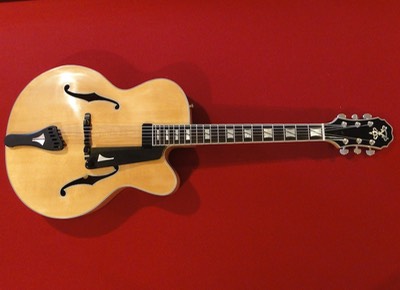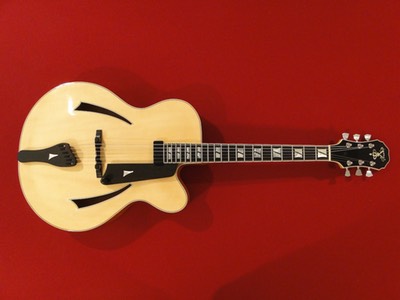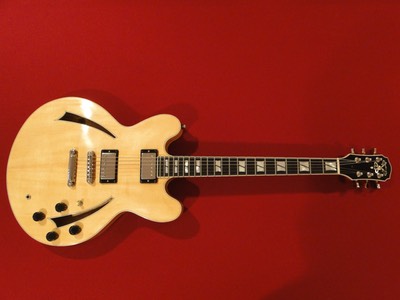There are a few things that you should know in terms of caring for these guitars...
1) Wood and humidity. Solid wood is the absolute best material for building guitars but wood can change size and shape with changes of humidity. During the summer you might have noticed that some of the doors in your house don’t open as well as they did in the winter. This is because the increased humidity of summer has caused the doors to swell and stick. The same thing happens to guitars, they can swell in the summer and more importantly shrink in the winter. Why is shrinking more important? When guitars shrink there is the chance that a crack will form between the grains of the wood on the tops and sides. For this reason we recommend keeping your guitar humidified in its case during the winter months (or humidify the room or house). You might also notice that the ends of the frets stick out just a hair during the winter. This is because the neck also can shrink slightly.
2) Heat and Cold. As above, changes in temperature can cause changes in the wood. If a guitar is left to bake in a hot car in the summer, the wood can crack because of extreme changes in heat. This heat can also effect the nitrocellulose lacquer finish so please don’t leave the guitar in extreme heat. Do not store the guitar in direct sunlight as this can heat the guitar and also bleach the finish. Likewise, extreme cold can also damage the guitar so do not leave the guitar in extreme cold for extended periods of time. Guitars that are “shocked” by sudden changes in temperature can also have neck warping issues.
3) Cleaning. Your guitar will need cleaning periodically. We recommend using a soft towel to wipe off the dust. The nitrocellulose lacquer is pretty tough stuff but don’t use chemical solvents on it for cleaning. We also recommend oiling the ebony on your guitar a once or twice a year (fingerboard, finger rest and tail piece). There are a lot of products out there for oiling and it is pretty much up to you to choose which one you like. Your ebony was coated with “bore oil” which is also used for coating the insides of ebony woodwind instruments,
4) Changing strings. Your guitar comes with jazz “11’s” on it. Changing strings on an archtop is very different from changing strings on an acoustic or electric guitar because the bridge on an archtop is not fixed to the top of the guitar. This means that if you take all of the strings off at once, the bridge will move. Your guitar was set up for precise intonation (i.e. open E and E at the twelfth fret are exactly one octave apart) and if the bridge moves, your intonation will have to be reset. To prevent this, remove only one string at a time as you change out the set of strings. The remaining five strings will keep the bridge in the exact right place. If for some reason you need to remove all of the strings at once, please mark the location of the bridge by placing small pieces of low tack masking tape (painters or drafting tape) around the left and right feet of the bridge so that you can get the bridge back to the exact same spot it was before. Gently peel the masking tape back on itself so it makes the shape of a “C” with you pulling on the upper curve of the “C” to the right. If you lift straight up on the tape you might pull the finish off of the guitar top! Should the high and low E string not be equally spaced after changing the strings, it might be that the bridge has shifted from side to side. If this happens, loosen the strings and gently shift the bridge to make the spacing even on both sides before tuning to pitch.
5) Guitar Storage. The safest place for your guitar is in its case. If you do store the guitar out of its case use a high quality floor stand or wall support. Many guitars have had their headstocks broken off because they were propped up, fell over and hit their headstocks on something. This is something that is costly and cosmetically difficult to repair.



